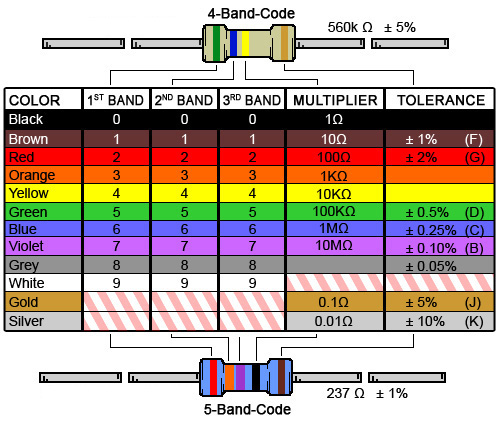| Difficulty | Timesink | ||
|---|---|---|---|
| Function | resistance(band_colors) | ||
Notes
- Since $1\;\Omega$ is a very small resistance, it's more common to express resistance in kilohms ($1\;\text{k}\Omega = 1,000\;\Omega$), megaohms ($1\;\text{M}\Omega = 1,000,000\;\Omega$), or even gigaohms ($1\;\text{G}\Omega = 1,000,000,000\;\Omega$).
- Nowadays it's easier to use a multimeter to measure it's actual resistance value. Calculating a resistor's value and tolerance from the color bands used to be more commonplace in the past when multimeters weren't as widespread or cheap.
- If you need a very specific resistance you can chain resistors in series or parallel. Variable resistors also exist in the form of potentiometers and digital resistors.
